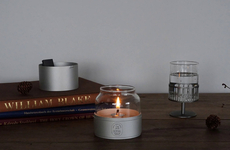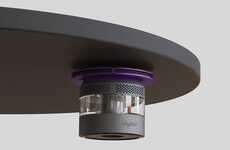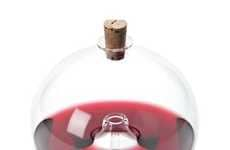
Designs for the ‘Malaria Must Go' Project to Fend of Mosquitos
References: andrewstordy & coroflot
Andrew Stordy, of the Royal College of Art’s Industrial Design Engineering program, has developed a series of paraffin burning lamps, as part of the Malaria Must Go project.
The charcoal-powered prototype shown in the first image is named LINDA, which is a mosquito-repelling oil lamp to kill the malaria carrying bugs. The odd part about LINDA is that it first baits the mosquitoes with a combination of carbon dioxide and human foot-odor, hence the suspended sock.
Despite this oddity, it is hard to argue with the noble cause of preventing the world’s largest child killer.
The charcoal-powered prototype shown in the first image is named LINDA, which is a mosquito-repelling oil lamp to kill the malaria carrying bugs. The odd part about LINDA is that it first baits the mosquitoes with a combination of carbon dioxide and human foot-odor, hence the suspended sock.
Despite this oddity, it is hard to argue with the noble cause of preventing the world’s largest child killer.
Trend Themes
1. Mosquito-repelling Lamps - Innovative and effective designs for mosquito-repelling lamps, which can be used to prevent diseases such as malaria.
2. Charcoal-powered Prototypes - Efficient and sustainable prototypes powered by charcoal, which can be used for various products and purposes.
3. Odor-based Baits - Innovative baits such as carbon dioxide and human foot odor, which can be used to attract and repel pests.
Industry Implications
1. Healthcare - Innovative solutions for healthcare industries to prevent and cure diseases such as malaria.
2. Home Decor - Innovative and eco-friendly home decor designs and products that serve a purpose beyond aesthetics, such as mosquito-repelling lamps.
3. Renewable Energy - Advancements in renewable energy sources such as charcoal, which can be used in sustainable and efficient designs for various products and purposes.
1.6
Score
Popularity
Activity
Freshness























